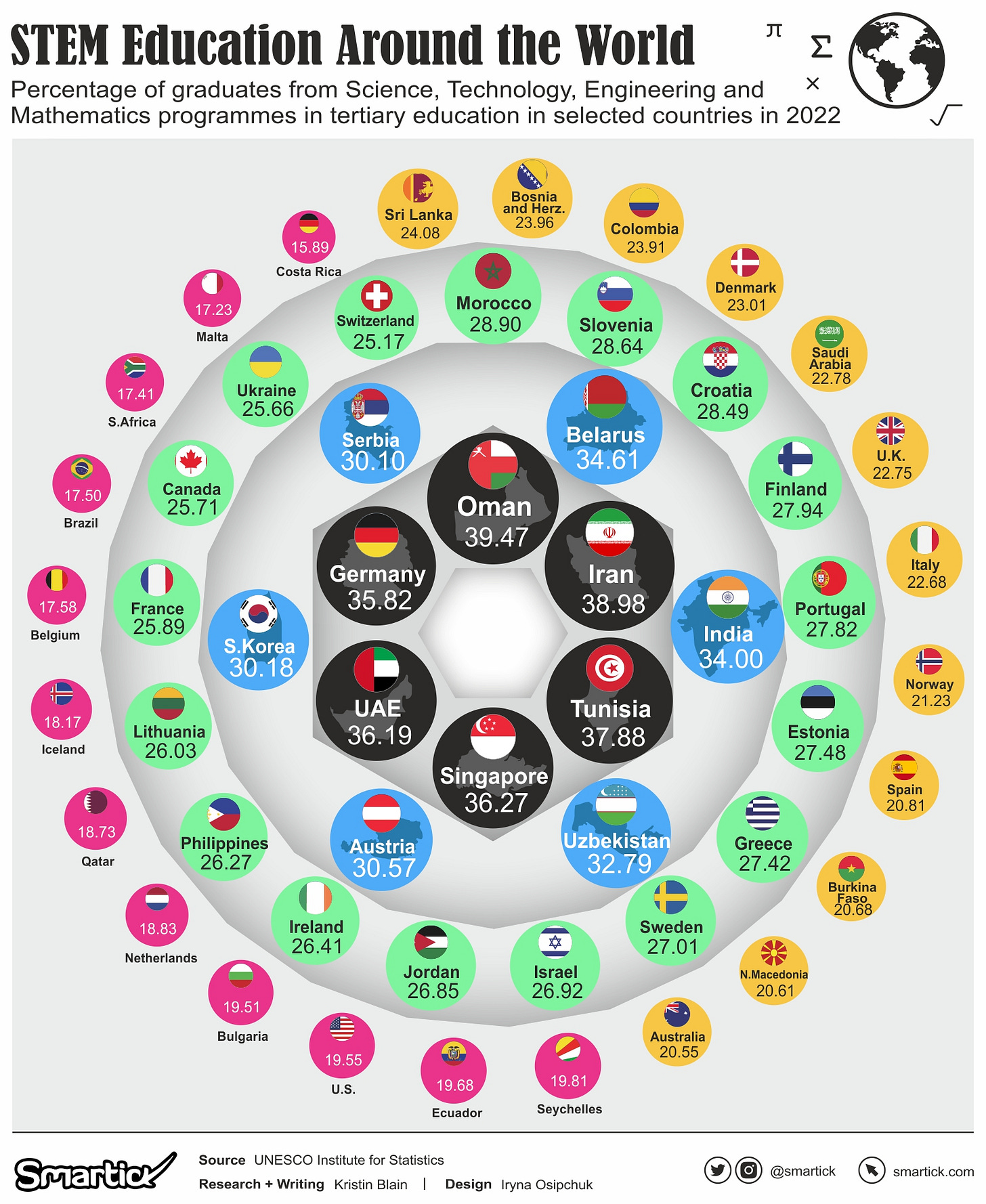Obituary: Conventional Wisdom
The Death of Conventional Wisdom: Trump, Gen X, and America’s Cultural Reckoning
America’s post-World War II complacency has left our way of life on the brink: no nuclear power plants built in four decades, crumbling infrastructure, outdated air traffic control systems, an aging Air Force One, an electric grid sabotaged by the green energy scam, and an education system failing to prepare the next generations. China surges ahead in drones, shipbuilding, and critical technologies, while geopolitical rivals exploit our vulnerabilities. History’s disruptors—those who challenged conventional wisdom at great personal cost—offer a lens for this moment.
Donald Trump, a relentless disruptor whose arc from brash rich kid to polarizing populist mirrors a fracturing culture, has exposed the rot of “The Establishmentarians”—the uniparty of Republicans and Democrats who betrayed the middle class. His vindication on so-called “conspiracy theories,” from the Russia hoax to Joe Biden’s hidden infirmities, has left critics reeling, confronting their plausibly-deniable deception or submissively-willful blindness, or both.
Alongside him, Generation X, once a “no-name” cohort with little cause, has awakened from apathy to fuel a populist revolt, amplified by social media’s raw connectivity. Together, they demand a reckoning for a nation asleep at the wheel, where politics, ever downstream from culture, reflects a society demanding change.
The Cost of Defying the Norm
History is forged by those who dare to shatter entrenched beliefs, often at immense cost. Galileo Galilei defied the Catholic Church’s geocentric dogma in the 17th century, asserting the Earth orbited the Sun. Branded a heretic, he endured house arrest, yet his work birthed modern science, proving truth outlasts dogma. Susan B. Anthony, in the 19th century, challenged a society that denied women political agency, facing arrest for voting illegally in 1872. Her sacrifice secured the 19th Amendment, reshaping democracy. Martin Luther King Jr. confronted systemic racism in the 20th century, enduring beatings, imprisonment, and assassination to catalyze the Civil Rights Act, forcing America to face its moral failings. These disruptors, from Socrates questioning Athens’ norms to Nelson Mandela enduring 27 years in prison to end apartheid, shared a common thread: they saw beyond the status quo, paying dearly to awaken their societies.
Their sacrifices reveal a timeless truth: progress demands courage to challenge conventional wisdom. America’s complacency since World War II—resting on its superpower laurels—has left us unprepared for a world where rivals outpace us. Cultural shifts, driven by an awakening generation and a disruptor like Trump, expose a corrupt establishment clinging to outdated assumptions.
Gen X: From No Name to No Nonsense
Generation X, born of Boomers between late 1964 and 1980, came of age in the shadow of their parents revolutionary zeal and their Millennials children’s digital activism, earning the label of a “no-name” generation with little cause to unite them. Raised in the era of latchkey childhoods, MTV’s neon glow, nuclear armageddon, and the sardonic rebellion of The Breakfast Club, they navigated the economic turbulence of the 1970s and 1980s, from stagflation to the Savings and Loan Crisis, with a cynicism born of broken promises. Voter turnout among 18- to 24-year-olds plummeted to 36% in the 1988 election, compared to 50% for Boomers in 1972, reflecting a generation more likely to crank Metallica than campaign for candidates. Yet, as Gen X entered adulthood, the digital revolution they helped spark—from their awkward place on MySpace to pioneering AOL chatrooms to downloading music on Napster—plugged them into a world where the failures of “The Establishmentarians” were laid bare. The gutting of 5 million manufacturing jobs since 2000 through globalization, coupled with wage stagnation driven by unchecked illegal immigration, hit Gen X hardest as they built careers and families, turning their disaffection into a smoldering resolve.
This awakening found fertile ground in the unfiltered corners of the internet, where platforms like X and Substack became megaphones for Gen X’s growing distrust. Social media exposed the hypocrisy of elites—offshoring jobs while preaching progress, pushing cultural mandates while ignoring working-class struggles. By 2016, 53% of Gen Xers backed Trump, per exit polls, drawn to his outsider assault on a system that had left them behind. Substack, with over 50 million active subscriptions and 5 million paid subscribers by 2025, emerged as a battleground for their voices, where writers like Matt Taibbi, born in 1970, channel the generation’s skepticism. Mind you, this is hallowed Rolling Stone Matt Taibbi. For being skeptical and observant, will he too, be burnt at the stake?
Taibbi’s Racket News dissects media bias and tech censorship, notably the Twitter Files that exposed suppression of the Hunter Biden laptop story—a “conspiracy theory” Trump was overwhelmingly vindicated on. Gen X’s digital fluency, honed from early internet forums to Substack’s 17,000 income-earning writers, fuels their critique of globalization’s toll and the cultural decay peddled by “The Establishmentarians,” transforming personal betrayal into a collective demand for accountability.
On Substack and X, Gen Xers, once politically aloof, now drive a populist surge, celebrating Trump’s condonation on issues like the Russia hoax, the “fine people” myth, the laptop, and Biden’s concealed infirmities. A 2023 Gallup poll shows 70% of Americans distrust mainstream media, a sentiment Gen X amplifies through newsletters and raw online debates that echo Trump’s defiance of elite narratives. While supporters on X praise his unfiltered truth-telling, critics grapple with their eroded faith in institutions, yet both engage on Substack’s open platform, where millions seek authenticity. Gen X’s shift from cynicism to action mirrors Trump’s relentless challenge to conventional wisdom, proving politics is downstream from a culture reshaped by their plugged-in adulthood. No longer the “slacker” generation, they are a force demanding reckoning, using Substack as both a megaphone and a meeting ground to challenge a system that forgot them.
Trump the Disruptor: Vindicating “Conspiracy Theories”
Donald Trump’s arc—from a spoiled Queens kid to builder, investor, celebrity, gadfly, dick-stepper, and polarizing disruptor—reflects a consistent core amid a shifting culture. In the 1970s, his bold style as a developer built skyscrapers and a brand, celebrated in an era that revered ambition. As The Apprentice’s star in the 2000s, he embodied the American dream—decisive and unapologetic. As culture turned toward political correctness and globalism, Trump became a gadfly, then a political force, using X to bypass gatekeepers, much like William Tyndale, who was burned at the stake for translating the Bible into English. Trump faces legal battles, impeachments, and relentless scrutiny - even a bullet to the ear - yet his disruptor label shines through, exemplified by his persistence and insistence on issues dismissed as “conspiracy theories,” exposing the depth of establishment corruption.
The Burning Of William Tyndale Oct 6 Written By Kendall Lankford 485 years ago today, a lion hearted man of God was brutally murdered in the streets of England. His crime? He believed the Bible alone should be the sole authority over the church and that every single Christian ought to have a copy to read for themselves. Based on this urgent conviction, William Tyndale began immediately translating the Holy Scriptures from their original Greek language into the language of the common man, which was English. He was mightily persecuted for that work. He was threatened on a daily basis by the Catholic Church. And, ultimately, he had to spend his remaining days on foot, living as a common criminal, while he finished the task of his translation. After finishing the New Testament in 1525, Tyndale worked tirelessly to smuggle those same New Testaments back into England, where owning a Bible was not only illegal, but could get you killed. In fact, this is exactly how William Tyndale died. No more than a few years later, while working on translating his Old Testament edition from Hebrew, Tyndale was found near Brussels, arrested, and charged with the crime of heresy by the Catholic Church. For his punishment, he was dragged out into the cobblestoned streets, strangled to death in front of an onlooking crowd, and then his body burned visibly at the stake. And while this is a sad day in the history of the English speaking peoples, it also offers tremendous hope. While Tyndale's God allowed the smoke of his body to rise up and over Europe, this same God was also causing the winds of reformation fire to blow. Not long after William Tyndale’s death more editions of the Bible were printed, including the King James Version of 1611, which became the most published book in all of human history. Our God can cause light to come out of awful darkness and new life to come even out of such horrific instances of death. Today, when you hold your English Bible, take a moment to thank our great God for dear saints, like William Tyndale, who have gone before us, and who have made it possible for you and I to read the only book in all the world that was breathed out by the breath of God. Sola Scriptura!
To put Tyndale in historical context, a common man translating the Word of God for other common people, was burned at the stake in public by the dominant political and religious experts (conventional wisdom) of his day. The same sanctimonious superiority is still at play, a millennia later. Independent thinkers were once one in a thousand in a village of ten. They subsumed roles as parodist, jester, idiot, rebel as a survival instinct.
And survive they did. Similar tribal alliances infect us now. Similar struggles still, and always, manipulate human affairs and politics for power. Just think of the labels applied one thousand years later to keep clinging onto power. What works? How to connect? Who is affected? When does it happen? Where will I be? Why so late? Is Gen-X the droll of the new century? FAFO.
Tyndale's translations of biblical books were re-used by subsequent English editions (often without his sectarian prefaces or annotations), including the Great Bible and the Bishops' Bible, authorized by the Church of England. In 1611, after seven years of work, the 47 scholars who produced the King James Version[6] of the Bible drew extensively from Tyndale's original work and other translations that descended from his.[7] One estimate suggests that the New Testament in the King James Version is 83% Tyndale's words and the first half of the Old Testament 76%.[8][9] In 2002, Tyndale was placed 26th in the BBC's poll of the 100 Greatest Britons.[10][11]
The Russia hoax, peddled by media and Democrats, alleged Trump colluded with Moscow in 2016. The 2019 Mueller Report found no evidence, and subsequent reporting lays blame on the Hillary campaign and discredited former-FBI director Comey, yet the narrative fueled years of division.
Perhaps the earliest antecedents of the European court jester were the comic actors of ancient Rome. Several Latin terms used in medieval references to jesters (including numerous church condemnations of them), such as scurrae, mimi, or histriones, originally referred either to amusing hangers-on or to the comic actors and entertainers of Rome. Just as there is now no clear distinction between the terms for "actor" and "jester" in Chinese, so the Latin terms could merge the two. If there was no formal professional jester in Rome, the comic actors fulfilled his functions, sometimes even bearing a striking physical resemblance to what is usually considered a medieval and Renaissance archetype. With periodic imperial purges against actors for their outspokenness, many of them took to the road and fanned out across the empire in search of new audiences and greater freedom. Successive waves of such wandering comics may well have laid the foundations for medieval and Renaissance jesterdom, possibly contributing to the rising tide of folly worship that swept across the Continent from the late Middle Ages.
The “fine people” hoax, claiming Trump praised neo-Nazis in Charlottesville, was debunked by full transcripts showing he condemned them explicitly. Two impeachments—over a Ukraine call and January 6—relied on flimsy grounds, with acquittals exposing their political motives. Court cases, from New York fraud charges to classified documents are on appeal, have unraveled, or been dismissed, with judges citing prosecutorial overreach and even misconduct.
The Hunter Biden laptop, suppressed by “51 former intelligence officials”, Democratic politicians, mainstream media and tech giants in 2020 as “Russian disinformation,” was later verified by the FBI and used as evidence by the federal government in a court of law to convict Hunter Biden, the son of a sitting President, Joe Biden. Ergo, completely disgracing conventional wisdom experts.
Most recently, Biden’s infirmities—evident in halting public appearances since 2020—were concealed by a tight inner circle and actively suppressed by media gatekeepers, only to be undeniable post-2024 election, confirming Trump’s long-standing claims about Biden’s fitness.
These absolutions have left Trump-haters reeling, forced to confront how deeply they were misled—or how willingly they embraced the left’s propaganda due to visceral hatred. A 2023 Gallup poll shows 70% of Americans distrust mainstream media, a cultural shift amplifying Trump’s disruptive impact. Like Socrates, condemned for questioning Athens’ norms, Trump’s provocations polarize but expose truths, dismantling the credibility of “The Establishmentarians” and their gatekeepers.
The Establishmentarians and the Populist Surge
Trump’s disruption targets “The Establishmentarians”—the uniparty of Chamber of Commerce Republicans (Bushes, Cheneys, Romneys) and New World Order Democrats (Carter, Clinton, Obama) who betrayed the middle class. Republicans championed free trade deals like NAFTA, offshoring 5 million manufacturing jobs since 2000, gutting the Rust Belt and leaving Gen X workers stranded. Democrats embraced illegal immigration, eyeing new voters, while businesses exploited cheap labor for jobs like construction and agriculture that couldn’t be outsourced. This unholy alliance enriched elites while eroding economic security, fostering resentment that Gen X, now raising families, channeled into political action. Polls from 2015 showed 60-65% of Americans dissatisfied with the nation’s direction, a sentiment Trump harnessed.
Trump dismantled the GOP’s old guard, replacing it with the broadest coalition in its history—blue-collar workers, small business owners, and disillusioned Gen Xers from both parties. His tariffs and “America First” policies aim to revive industries like steel and aluminum, countering China’s economic dominance. His rhetoric on immigration and cultural issues—amplified on X—corners Democrats into defending politically toxic stances, from open borders to extreme social policies, driving their party into disarray. This populist surge, rooted in cultural distrust and Gen X’s awakening, shows how politics bends to cultural currents, with Trump as the catalyst exposing the uniparty’s failures.
The Existential Threats of Complacency
America’s complacency since World War II has left us vulnerable on multiple fronts. No nuclear power plants have been built since the 1980s, despite nuclear’s potential for clean, reliable energy, while China operates 53 reactors with dozens more planned. California hasn’t built major dams or reservoirs since the 1970s, with the Oroville Dam’s near-collapse in 2017 exposing our failure to address critical population security risks. The air traffic control system, reliant on 1970s IBM 3083 mainframes and COBOL software, logged over 1,800 near-misses in 2023, endangering lives and economic stability. Air Force One, a pair of 40-year-old Boeing 747-200s, awaits replacements mired in a $2 billion overrun, delayed to 2027 or beyond. Trump’s pivot to a Qatari 747-8—a $200-$400 million “gift” requiring costly retrofitting—pressures Boeing and the Pentagon, a classic disruptive move exposing industrial failures.
The electric grid, with 70% of components over 25 years old, suffered 1,500 major outages in 2023, vulnerable to weather and cyberattacks. Diverted by the green energy scam, billions have been poured into unreliable wind and solar projects—California’s solar farms produce just 20-30% capacity on cloudy days—while neglecting advanced nuclear or natural gas. China’s dominance in drones (DJI’s global control), shipbuilding (over 50% of world output), and 37 of 44 critical technologies, from robotics to quantum communications, exposes our industrial decline.
China’s Drone Ascendancy and America’s Kodak Moment
China’s drone dominance, led by DJI’s 70% global market share, mirrors the kind of bold innovation America once championed but lost to complacency, much like Kodak’s fall from grace. In the 1980s, Kodak, a titan of photography, invented the digital camera but shelved it to protect its film business, a fatal misstep that led to bankruptcy by 2012. Meanwhile, DJI, founded in 2006, seized the drone frontier, blending Craft—precision engineering—with strategic state support, producing $20 billion annually by 2025. Gen X, who cherished Kodak’s Instamatic for capturing skatepark stunts and prom nights, watched its collapse with the same disbelief as they now see China’s drones dominate skies, a wake-up call for a nation that ignored new horizons.
Gen X’s Walkman Nostalgia and America’s Drone Deficit
Generation X, raised on the Sony Walkman’s rebellious portability—blasting RUSH or Black Sabbath through foam headphones—knows the sting of innovation left behind. The Walkman, launched in 1979, was a cultural artifact of Music and freedom, but by the 2000s, Sony’s failure to pivot to digital music players let Apple’s iPod steal the spotlight. Similarly, America’s drone industry floundered as companies like 3DR crumbled against DJI’s affordable, high-tech drones. U.S. R&D spending, stuck at 2.8% of GDP since 2000, lags China’s targeted 2.4% surge into dual-use tech like drones. Gen X, who invented mixtapes, now sees China’s drones on battlefields and film sets as a stark reminder of America’s failure to evolve the Art of technological creativity.
Open Letter to Gen X: #5 - Identity and Intersection
My Friends, Substack is awesome! My posts have a new structure, and will have some new features, sections, and other surprises. Surprises because even I don’t know what they are yet! Keep scrolling d…
Security Risks: From Walkman to Drone Vulnerabilities
The national security risks of China’s drone dominance parallel corporate missteps like Kodak and Sony, exposing America’s vulnerabilities. DJI drones, used in U.S. agriculture and policing, risk sending data to Beijing, with 2023 reports flagging potential backdoors. China’s military drones, like the TB-001, outstrip U.S. models in range, while America’s reliance on Chinese components—90% of drone parts—echoes Kodak’s refusal to embrace digital shifts, leaving it obsolete. Gen X - raised on 8-tracks and vinyl, categorizing cassettes, celebrating CDs, discovering digital - now faces a world where China’s drones dominate critical industries, a geopolitical weapon born of U.S. complacency. And we’re pissed.
Like an outdated air traffic system or Air Force One, this dependency is a History lesson in hubris, with The Establishmentarians’ inaction leaving America exposed to rivals.

Reclaiming Innovation: Gen X’s Call to Action
To counter China’s drone threat, America needs a cultural and industrial revival, echoing Gen X’s growth from mixtapes in Walkmans to playlists on Spotify. Just as Trump’s disruption exposed establishment rot, Gen X must channel its DIY ethos—born in zine-making and mixtape culture—to rebuild industries. Policies like tariffs can revive domestic drone production, breaking China’s grip on rare earths. Universities and startups, like the garage bands of Gen X’s youth, must sync in a Music-like rhythm to out-innovate DJI. Substack and X, platforms Gen X helped shape, can amplify this call, much like freeway-flyers fueled past revolutions. By reviving the Craft of engineering and the History of American ingenuity—think Bell Labs or NASA—Gen X can mentor a generation to master drones and STEM, ensuring America’s story doesn’t end as Kodak’s did: a relic of a forgotten frontier.
The U.S. relies on China for semiconductors and 90% of antibiotics, a strategic vulnerability. Geopolitical threats—China’s South China Sea aggression, Russia’s war in Ukraine, Iran’s proxies attacking Israel, North Korea’s missile tests—stretch our resources, while domestic polarization (11-12% of Americans justifying political violence, per 2023 surveys) and unaddressed societal pressures compound the crisis.
The Decline of American Education
Another existential threat looms in the decline of American education, a cornerstone of national strength now eroded by complacency and ideological capture. Since the 1980s, U.S. students have fallen behind global peers—15th in math and 13th in reading among OECD nations in 2022 PISA rankings. Public schools, burdened by bureaucratic bloat and union-driven resistance to reform, prioritize ideological agendas over core skills. Only 13% of eighth graders are proficient in U.S. history, per 2023 NAEP data, leaving students unprepared for civic life or a competitive workforce. Meanwhile, China’s education system, emphasizing STEM and discipline, produces more STEM graduates annually compared to America. The push for “equity” over merit, coupled with declining standards—some schools eliminating advanced math or standardized tests—has weakened the pipeline for engineers and innovators needed to counter China’s technological edge.
This educational decay, like the green energy scam, reflects “The Establishmentarians” misplacing priorities, diverting resources from rigorous academics to ideological battles. Trump’s calls for school choice and curriculum reform challenge this status quo, resonating with Gen X parents frustrated by failing schools. The cultural shift toward distrust, amplified by X’s exposure of these failures, underscores how politics follows culture, with education as a battleground for renewal or decline.
Trump and Gen X at the Crossroads
Trump, the ultimate disruptor, and Gen X’s political awakening channel history’s change-makers. Galileo, Anthony, King, and Mandela paid steep prices to expose truths, reshaping their eras. Trump’s propitiation on “conspiracy theories”—from the Russia hoax to Biden’s infirmities—reveals the depth of establishment deception, leaving critics to grapple with their determined bias or willful blindness. His coalition, bolstered by Gen X’s shift from apathy to action, challenges The Establishmentarians’ betrayal—offshoring jobs, enabling immigration, neglecting education. The Qatari jet, like his tariffs, exposes systemic failures, demanding accountability. Social media, especially podcasts, X and Substack, has been a force multiplier, turning Gen X’s cynicism into a movement and amplifying Trump’s unfiltered voice.
The threats are dire: an industrial base outpaced by China, neglected infrastructure (dams, air traffic systems, Air Force One), a grid undermined by green hype, and an education system failing the future. Gen X, once slackers, now drives the populist wave, their plugged-in adulthood fueling a cultural shift that reshapes politics. Trump stands at this crossroads, a catalyst forcing America to choose: cling to a failing status quo or embrace the painful work of renewal. Can we rebuild our industries, modernize our infrastructure, educate our youth, and unite against rivals?
I’ll leave you with this image. Honestly, this speaker I bought because it was right-sized and functions well. The brand was irrelevant. Sony was a by-product, not a go-to. Let’s hope America wakes up sooner than Kodak.
Ric
Share your thoughts below, and let’s discuss what this moment demands.














